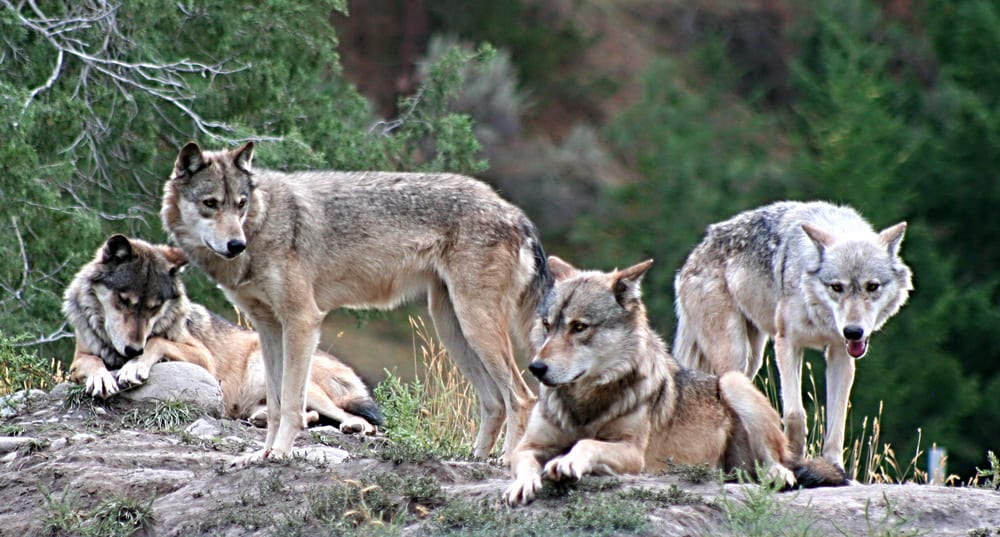
History
Dogs belong to a biological family of carnivorans known to scientists as Canidae. This family includes wolves, coyotes and foxes. It is believed to have evolved 60 million years ago and domestic dogs are directly descended from wolves. About 12,000 years ago, these wolves came to villages around the Northern Hemisphere looking for food. Gradually, humans started using them to help meet their own needs, such as to guard, herd and hunt. Certain characteristics were selected for different purposes, which is — in part — why we have huge diversity of dog breeds today.
A breed known as the Saluki appears in images on ancient Egyptian tombs from around 2100 BC and is also believed to be the type of dog that’s mentioned in the Bible. The people of ancient Greece and Rome used selective mating to create a number of breeds, such as the Mastiff, Bloodhound and Greyhound.
More recently, newer breeds were developed to help us. In the mid 1800s for instance, Dalmatians were bred to run next to horse and carriages, to keep away other dogs who might chase the carriage and scare the horses. Fire departments also started to use dalmatians for guarding their carriages, which is why the dalmatian is the mascot of the fire service. Dogs are well known as ‘man’s best friend’ because of their history of companionship with humans across the globe, beginning with wolves, who would help man hunt in the early days. The earliest writing of the actual phrase ‘man’s best friend’ dates back to a poem written in 1821.
Life Span
Canine life span can vary wildly depending on breed. However, the average life span of a dog is between 12 and 14 years.
Distribution and Habitat
Dogs are can be found on every continent except Antarctica. They live in a range of habitats including temperate forests, rainforests, grassland, deserts and tundra.

Behaviour in the Wild
All domestic dogs are descended from grey wolves (Canis lupus). Grey wolves are carnivores who hunt large prey, including reindeer, moose and elk. These canids usually hunt in packs, which is how they take down larger animals, but they will also hunt smaller prey animals, like rabbits and rodents. Each wolf pack generally contains between 6 and 10 wolve individuals. However, the more food available, the more likely it is to find packs on the larger side. There is a hierarchy within the pack which dictates that higher ranking pack members eat first. This hierarchy is also linked to reproduction: Only the Alpha male and female — the most dominant members of the pack — get to breed.
What’s it like having a pet dog?
Cons
- Dogs can be wonderful companions but need a lot of your time and you must commit to this when taking one on.
- Dogs poop like everybody does and it is your responsibility to clean it up after.
- Dogs require a lot of attention unlike cats, who can cope better with little affection.
- Dogs can be high maintenance depending on the breed, expect to pay for vet check-ups and booster injections regularly.
- You have to walk them every day. Dogs need exercise and socialisation outside of just the garden. This needs to be done daily.
- Dogs are prone to many illnesses and diseases in later life, this can be upsetting for those who have grown attached.
- Depending on the breed, many dogs can leave a lot of hair around the house and may need regular grooming.
- Puppies and even older dogs chew. They will chew on anything you leave around the house, so be prepared to lose a few slippers.
- Dogs love to dig holes in your garden. They aren’t trying to annoy you though, it’s natural – in the wild they dig holes to protect and hide their young.
Pros
- Dogs protect your property.
- Dogs are fun and energetic. They are good company and very friendly.
- Dogs are great for families or lonely people who need some comfort.
- Puppies (if trained) can do tasks, like finding something that’s lost, fetching items or even helping with the washing.
- Dogs are sympathetic and can brighten up your sad day.
- Dog training can be fun – doing things with a dog like tricks and obstacle courses can be very rewarding.
- Dogs will always be there for you no matter what and they will never judge.
Did you know?
It’s a myth that dogs can only see in black and white. Dogs can see primarily in blue, green, yellow and various shades of grey!
Feeling a bit anxious? Studies indicate that petting your dog can lower your blood pressure.
Dogs have wet noses intentionally, the nose of a dog secretes a small bit of mucus to help them absorb scent chemicals. This is why a healthy dog should have a slightly wet nose.

